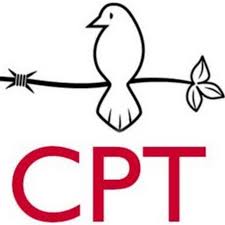Sowing seeds
The classroom was cold and quite drab, and there were so many old and squeaky benches that it was almost difficult to walk through the room. A group of girls came in and went to sit down in the front benches. Oh, there’s no electricity! We can’t show them the film clips that we’ve prepared! And, says one of the teachers, some of the students need to take a bus at 12 o’clock, so there’s only fifty minutes for the workshop. Hm, we had asked for an hour and a half … More and more students come in, we had agreed on forty but I think that there were sixty or more. Okay, we say to one another, let’s do the best we can under the circumstances.
After a short introduction of us and CPT, I start with the first exercise, the spectrum. “Those of you who believe that there is a lot of violence in your society, you put yourselves on this end of the line. If you think there is not a lot of violence in society, you go to the other end.” They come up, and most of them go to the “alot of violence” end. “Why did you put yourself here?” I ask the guy standing on the far end. “Yes there is a lot of violence," he responds, "for example in the homes, against women". Another says, “Some people have the possibility to go to fancy hospitals abroad if they need care, most of us can’t do that.” A third student says: “There is also psychological violence, like when someone speaks in a degrading way to another.” They have several more examples. I’m surprised at how fast they come to think of different kinds of violence. Girls and boys are as eager to share their thoughts.
Lukasz takes over the facilitation, “So, how are we, as a society, going to move from this side to the other side of the spectrum? There are two common reactions to violence, one is to respond with violence, the other to run away, or just look the other way. Nonviolence is a third alternative, it means to fight for justice and peace without the use of violence.” The students had ideas about how to do this. "We need to learn more ourselves. We need to educate people about nonviolence.". Mohammed and I then shared briefly about Gandhi, about the principles of nonviolence, some different methods of nonviolence. In the beginning the atmosphere was kind of messy, but now every one of them seems to listen attentively.
Afterwards when Mohammed reads aloud what they have written on the evaluation sheets, I feel happy and grateful. “It should have been longer!” one student wrote. “I have learnt that violence only gives rise to more violence.” said another. “You forgot to mention sexual violence.” ”I want this kind of workshop every year.” Maybe we have sowed a few seeds, even if this time the workshop was so short and a bit chaotic.

